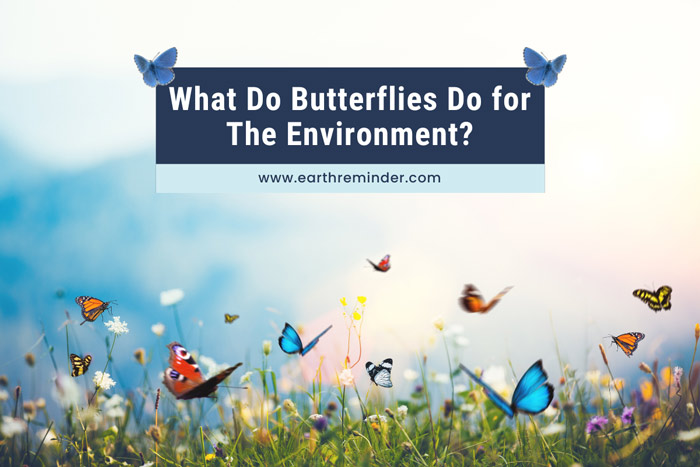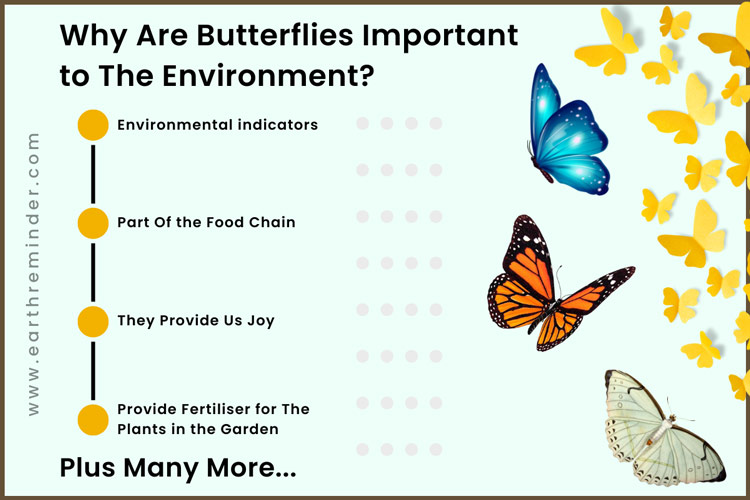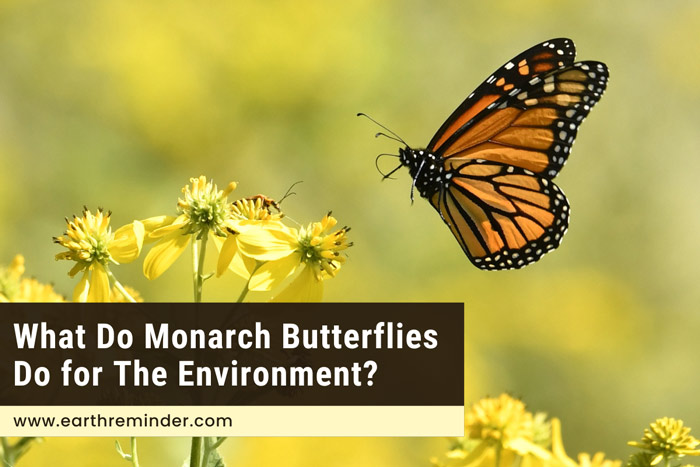What Do Butterflies Do for The Environment?
Butterflies are beautiful and delicate creatures that we generally see in our gardens. They play a vital role in the environment. They pollinate flowers by carrying pollen from one to another, which allows them to grow. It helps create new plants and gives food to other animals. They also act as natural environment indicators that tell us whether the particular environment is healthy or not. Here we will look into more detail about what butterflies do for the environment.
Table of Contents
What Do Butterflies Do for The Environment?
Butterflies are the ecology’s natural indicators; we can learn everything about a better ecosystem from all these insects. Such butterflies visit the flower to consume nectar, and the relationship is mutually advantageous. They are efficient pollinators. Several butterfly species travel large distances and transport pollen between plants far apart. Plant species experience genetic variation as a result of this pollen migration, which increases their resistance to certain illnesses. Such insects also work as biological pest management and serve as food for other creatures, including birds, reptiles, and amphibians. Yet, due to human activity, habitat damage, pesticide usage, and a lack of understanding of their value, the population of these insects is declining quickly.
Adult butterflies unintentionally collect pollen on their bodies as they rub against the anther when they land on a flower to drink some delicious nectar via their proboscis. The butterfly gathers more pollen by rubbing some on the flower it will visit next. The butterfly can pollinate many flowers as it travels by using this mechanism. Plants can grow by developing seeds due to pollination.
“Did you know that birds also play an important role in pollination? Read more about why are birds important to the environment?”
Are Butterflies Good for The Environment?
Yes, butterflies are good for the environment. Several animals, including small mammals, birds, and other insects, depend on butterflies for food at different phases of their lives. Aphids are (plant) pests; however, several species of butterflies help to manage them by eating them. By regulating animal and insect populations, they perform a crucial role. Butterflies are typically abundant during specific periods of the year. As a result, they play a significant role in several species’ food chains. In many habitats, butterflies serve as pollinators and food for many other plants and animals.
Why Are Butterflies Important to The Environment?
Well, butterflies serve us in ways that go beyond simply beautifying and bringing color to our gardens. Here are some of the ways they support the environment:
Provide Fertilizer for The Plants in the Garden
Since they are attracted to vibrant flowers and need nectar to survive, butterflies are great for the garden. Their bodies consequently gather pollen and disperse it to other plants. Fruits, vegetables, and flowers can all generate additional seeds besides these. Pollinators like bees and butterflies are required for most plants to grow.
“Did you know that bees also contribute to the balance of our ecosystem more than simply making honey? Explore how bees contribute to the environment here.”
They Provide Us Joy
Our mental health benefits from spending time in nature, even simply watching butterflies in gardens, parks, or in the wild. People often feel happiness and a sense of peace. We begin to appreciate the world around us when we watch butterflies. We’re more likely to protect nature when we feel connected to it.
Part of the Food Chain
Every living thing requires food, and butterflies serve as food for several insects-eating or “insectivorous” animals. During their early stages as caterpillars, they eat plants, which controls how many plants grow. When they turn into butterflies, birds, bats, reptiles, and even amphibians eat them. They keep everything healthy and balanced by passing energy and nutrients between animals.
“Have you ever wondered why energy moves through our environment in a specific way? Learn about how energy flows through an ecosystem here.”
They Are Indicators of the Environment
Environmental indicators include certain species of creatures. If these species are discovered somewhere, the ecology and environment will likely be healthy. It’s because they need resources exclusive to a healthy and frequently relatively unspoiled habitat.
Butterflies are a “litmus test” for the environment, either present or absent. A litmus test is a simple way to tell if something is present or not. The presence of butterflies indicates a positive environment, whereas their absence may indicate a degraded and unhealthy one. The existence of butterflies may aid ecologists or biologists in their initial attempts to assess the state of an ecosystem. Scientists also monitor butterflies since they’re so sensitive to climate change and habitat fragmentation. It’s like a simple sign to tell how the environment is doing.
What Do Monarch Butterflies Do for The Environment?
Monarch butterflies are known for their bright orange wings and long migrations. They eat and lay their eggs on a plant called milkweed. They’re admired by people, but they’re in danger because milkweed is disappearing, pesticides are everywhere, and the weather’s changing. Many people are working to save them.
Monarch butterflies play a very important role in the environment by pollinating flowers and helping plants reproduce. It’s essential for plants to grow and to produce seeds and fruits, which other animals eat. There are a lot of birds, insects, and other animals that eat monarchs. Since they’re dependent on milkweed (plant), their migration patterns can tell us if the environment is changing. Scientists and conservationists can learn a lot about the environment by observing monarch butterflies. Their decline might be a sign that something’s wrong in the ecosystem.
“Butterflies are insects, but all other animals have certain characteristics. You can learn about the classification of animals here.”
Conclusion
Butterflies are essential to the ecology because they aid in pollination, provide food for other species, and reveal the state of ecosystems. They assist in pollen movement from one plant to another when they visit flowers, search for nectar, and assist in plant reproduction. They provide food for many animals, including birds, bats, and insects. Also, since butterflies are sensitive to habitat changes, their population could be utilized to gauge an ecosystem’s health. So, protecting butterfly habitats can also aid in the preservation of other species and also the ecological balance as a whole.


